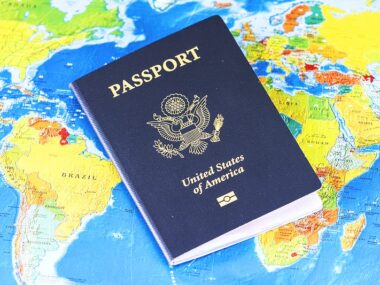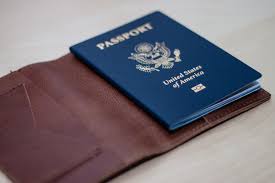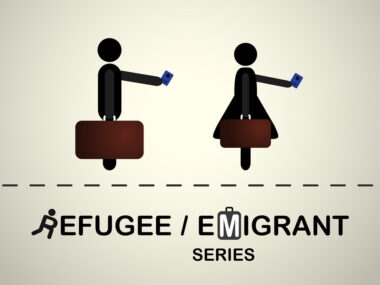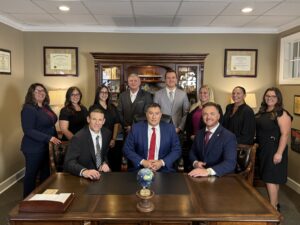Studying in the United States is an aspiration shared by millions of students around the world. America universities and colleges are known for their prestigious institutions, cutting-edge research, and diverse student population, the U.S. offers opportunities that are unmatched by many other countries. However, one of the most significant barriers that international students face is the high cost of education, which includes tuition fees, living expenses, and accommodation. For many, this financial challenge can make studying in the U.S. seem like an unreachable dream. Fortunately, there are several programs and scholarships designed to alleviate this burden, allowing students to pursue their academic goals without worrying about finances.
One of the most sought-after opportunities is securing a fully funded USA student visa, which not only covers your tuition fees but also provides free accommodation, living stipends, and sometimes even travel allowances. A fully funded scholarship can make studying in the U.S. more affordable and accessible, helping students from diverse backgrounds achieve their academic dreams. However, navigating the application process for such scholarships and visas can be overwhelming, especially for those unfamiliar with the requirements and procedures.
In this article, we will guide you through the process of applying for a fully funded USA student visa with free accommodation. From researching scholarships and grants to understanding the visa application process, this comprehensive guide will equip you with the knowledge you need to take the first step toward studying in the U.S. Whether you’re looking for university-specific scholarships, government-funded programs, or other financial aid options, you’ll find all the information you need to turn your dream into reality.
What is a Fully Funded USA Student Visa?
In a nutshell, A fully funded USA student visa typically refers to a student visa (usually F-1 or J-1) granted to international students who have secured financial aid to cover their tuition, living expenses, and accommodation. This financial aid could come in the form of:
- Full Tuition Scholarships
- Government-sponsored Grants
- University-funded Aid
- Research Assistantships
- Other financial support programs
Being “fully funded” means that all the costs of studying in the U.S., including your tuition fees, accommodation, health insurance, and living expenses, are covered by a scholarship, grant, or other funding sources.
Types of Fully Funded USA Student Visa Programs
There are several types of fully funded USA student visa programs that you can apply for, depending on your level of study (undergraduate, graduate, or post-graduate). Here are the most common programs that offer full funding:
1. Fulbright Scholarship Program
The Fulbright Program is one of the most prestigious international student exchange programs in the U.S. It offers fully funded scholarships for graduate students, young professionals, and artists. Fulbright scholars receive funding for tuition, travel expenses, health insurance, and a stipend for living expenses. Fulbright Scholarship program is of two type, the Foreign Fulbright program and the US Fulbright program. As a foreigner seeking for scholarship program, you are to visit the Foreign Fulbright Program .
2. University-Specific Scholarships
Many U.S. universities offer scholarships that cover the full cost of tuition and living expenses for international students. Majority of them covers all which some covers up to 80%. Notable examples include:
- Harvard University: The Harvard College Scholarship Program offers need-based financial aid that may cover the full cost of tuition, fees, and living expenses.
- Stanford University: Offers various fully funded scholarships and assistantships for graduate students.
- Yale University: Offers full scholarships and stipends for students from low-income backgrounds.
One thing you should know is that most of the schools offers scholarship programs even some partner with the likes of Mastercard and co. Visit the website of the school you want to go to so as to know the criteria for applying for their scholarship.
3. Government and NGO Scholarships
Governments and NGOs in various countries provide funding to help their citizens study abroad. These scholarships often cover full tuition and living expenses. Some examples include:
- The United Nations Scholarship Programs
- The Gates Cambridge Scholarship
- The Chevening Scholarship
4. Research Assistantships and Teaching Assistantships
Graduate students pursuing research or teaching assistantships may receive funding through their university, which covers tuition, a stipend for living expenses, and sometimes free accommodation. This is very good for student going for PHDs program. You can easily chat the professor of the department you want to go to inquiring about Masters/phD research assistantship. This method works most of the time and all you need to do is to send them a cold email.
5. Private Sector Scholarships
Some private organizations, including tech companies and foundations, offer scholarships and fellowships for students in specific fields of study (e.g., technology, business, engineering). These programs may also include free housing options.
How to Apply for a Fully Funded USA Student Visa
Applying for a fully funded USA student visa requires careful planning and attention to detail. Below are the key steps to help you navigate the process:
1. Research Scholarships and Financial Aid
The first step in applying for a fully funded USA student visa is to research available scholarships and financial aid programs. You need to identify scholarships that align with your area of study, background, and needs.
- Start early: Some scholarship deadlines are up to a year before the start of the academic year.
- Check eligibility: Make sure you meet the eligibility criteria for the scholarships you’re interested in.
- Use scholarship databases: Websites like Scholarships.com, Fastweb, and EducationUSA provide comprehensive listings of scholarships.
2. Prepare Your Application Materials
Once you’ve identified a scholarship or funding program, gather the necessary documents. Typical application materials include:
- Academic Transcripts: Copies of your previous academic records.
- Recommendation Letters: Letters of recommendation from professors or mentors who can vouch for your academic and personal strengths.
- Personal Statement: A compelling essay that explains why you want to study in the U.S. and how you plan to contribute to your field of study.
- CV/Resume: Your academic and extracurricular achievements.
- Test Scores: Depending on the program, you may need to submit standardized test scores such as GRE, TOEFL, or IELTS. ( This isn’t compulsory but it is an added advantage )
3. Apply for the Scholarship or Program
Each scholarship has a specific application process, so make sure to carefully follow the guidelines provided by the scholarship provider. Pay attention to deadlines and ensure that all documents are submitted correctly.
- Submit application forms online or through the scholarship’s official portal.
- Keep track of deadlines: Make sure to submit all materials before the deadline, as late submissions are often not accepted.
4. Apply for a U.S. Student Visa (F-1 or J-1)
Once you’ve secured funding, you can apply for a U.S. student visa. To apply for an F-1 or J-1 visa, you need to follow these steps:
Step 1: Pay the SEVIS Fee
The Student and Exchange Visitor Information System (SEVIS) is a government database that tracks foreign students. Before applying for a visa, you must pay the SEVIS fee, which is a requirement for obtaining an F-1 or J-1 visa.
Step 2: Complete the DS-160 Form
The DS-160 is the online application form for a U.S. student visa. You must fill out this form accurately and submit it electronically.
Step 3: Schedule an Interview
Once you’ve completed the DS-160 form, schedule a visa interview at the U.S. embassy or consulate in your country. The waiting times for interviews can vary, so it’s important to apply early.
Step 4: Prepare for the Interview
Prepare for your visa interview by gathering the following documents:
- Valid Passport
- Visa application confirmation
- Form I-20 or DS-2019 (issued by your U.S. educational institution)
- Financial support documents (proof that your funding is sufficient to cover your tuition, living expenses, and accommodation)
During the interview, the consular officer will ask you questions about your academic plans, financial situation, and intentions in the U.S.
Step 5: Attend the Visa Interview
Attend the interview at the U.S. embassy or consulate. If your visa is approved, you will be issued an F-1 or J-1 visa to enter the U.S.
5. Secure Accommodation in the U.S.
Many fully-funded programs offer free or subsidized accommodation for international students. Some ways to secure accommodation include:
- University dormitories: Many universities provide on-campus housing for international students, often at a discounted rate.
- Graduate Assistantships: Graduate students receiving assistantships may have free or subsidized accommodation provided by the university.
- Private housing: Some scholarships may offer a stipend to help students rent off-campus apartments or shared housing.
6. Book Your Flight
Once your visa is approved, you can book your flight to the U.S. Many fully-funded programs will cover the cost of your travel as part of the scholarship package. Ensure that you arrive at least a week before the semester starts to familiarize yourself with the campus and your new environment. To book cheaper flight, visit one of these booking platform Wakanow , Skyscanner , Cheapflight, Travelwings .
Tips for a Successful Application– Visa Sponsorship in USA
- Start early: Most scholarship and visa applications require significant preparation. Aim to begin the process at least one year before your intended start date.
- Be organized: Keep track of deadlines, required documents, and application forms to avoid last-minute stress.
- Write a compelling personal statement: This is your chance to stand out from other applicants. Explain your goals, ambitions, and why you’re passionate about studying in the U.S.
- Double-check your application: Make sure all the information you provide is accurate and complete to avoid delays in processing your application.
Conclusion
Applying for a fully funded USA student visa with free accommodation is a multi-step process, but with careful planning and dedication, it’s entirely achievable. By securing a scholarship or financial aid, preparing your visa documents, and following the necessary steps, you can turn your dream of studying in the U.S. into a reality. Remember to start early, research all available opportunities, and stay organized throughout the application process.
NOTE: The fastest way is still to write the professor of your department and send a cod email inquiring about either Master or phD. Sample of a cold email will be in the comment section.
Good luck with your application, and here’s to a successful academic journey in the United States!










